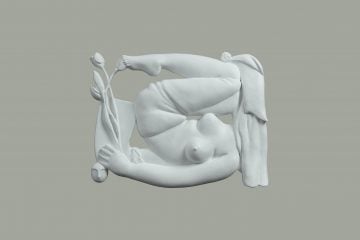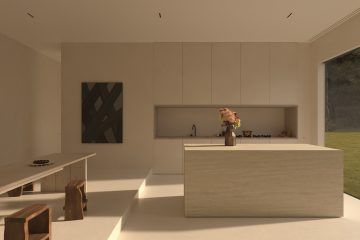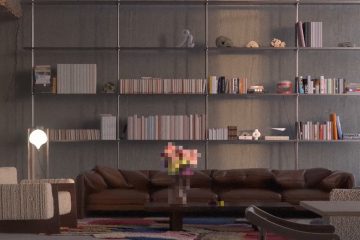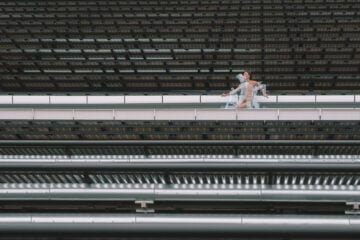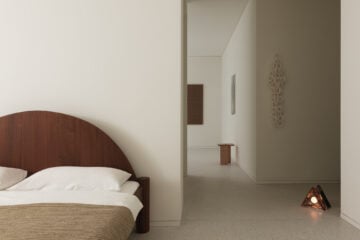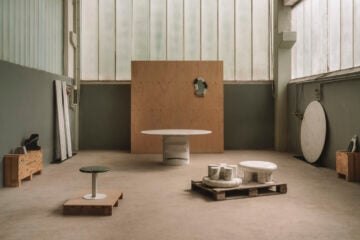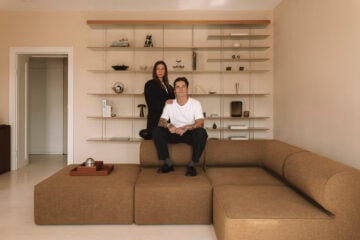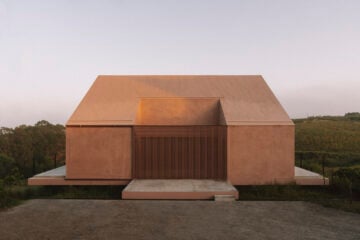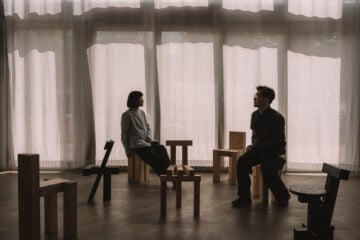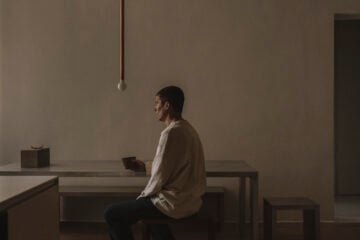Meet Valentin And Antoine, The Faceless Founders Of The Parisian Creative Bureau Services Généraux
- Name
- Services Généraux
- Images
- Leonard Mechineau
- Words
- Rosie Flanagan
I had subconsciously relegated three-way chats from landlines to the early ’00s, lost—for the best—amidst a sea of low rise jeans, MSN messenger, and bad computer graphics. Last week, this disembodied way of chatting—all sound, no visuals—provided a strangely perfect format for an interview with the notoriously private founders of the Parisian creative bureau, Services Généraux.
Prior to our international and extremely lo-fi call, I attempted to Google Antoine and Valentin, but my search reaped oddly few results. Comparatively, discussions of the studio’s multidisciplinary work across space, object and image, and their illustrious client list—which includes Louis Vuitton, Byredo, Carven, Nina Ricci, and Nike—can be found in abundance. In an era when the line between public and private has never been more blurred, personal celebrity is commonly used to leverage creative position. Services Généraux has taken a somewhat counter-intuitive approach to self-branding, drawing upon Roland Barthes’ Death of the Author—both in jest, they explain, and in seriousness—in their decision to remain, almost, anonymous.
So, who are Antoine and Valentin?
Even down a crackling phone line, the pair are easy to differentiate in conversation. Valentin’s accent is American blushed by only the faintest French. He speaks seriously and eloquently about the work of the studio, considering his words and rephrasing things to be sure that he is correctly relaying his intention. Antoine has a thick Parisian accent and is quick to laugh: “It is easy to tell us apart, I am the one with the terrible English!” he jokes. On the few occasions that words fail him, he reverts to French, which Valentin thoughtfully translates back into English for me. It appears that in conversation, as in business, they work in symbiosis.
The pair met whilst studying at ENSCI in Paris, and while Antoine describes their first collaboration as being a “complete disaster” (a fact Valentin corroborates, before adding the disclaimer: “it was entirely my fault”), the pair quickly fell into a pattern of successful work that utilized their different skill sets. It was after graduation and brief stints spent working in architecture (Valentin), and art direction at Celine (Antoine), that a string of freelance jobs brought them back together. “We basically had no choice”, Antoine laughs. “We worked so well together on these projects that we had to make a studio—and, voila: Services Généraux!”.
With characters and skill sets that are complementary to an almost disconcerting degree, Services Généraux is reflective of a creative partnership that balances Valentin’s detail-oriented design work with Antoine’s big-picture thinking. “We don’t really argue, but when we do it is never about the vision,” says Antoine, “it’s more about how we can make things better”. In keeping with their enigmatic persona, online you’ll only find their projects, rather than the people behind them. This “front”, the pair explain, is partly because they feel uncomfortable being in the spotlight, and partly because they believe their work should speak for itself.
“Services Généraux is more than the sum of its parts,” explains Valentin. “If you break down the studio, it’s a bunch of people. A few people doing art direction, a few people doing design, and a few people doing CGI. But if you separate all these elements from each other, you lose a lot of richness, and so thinking about the studio in a united sense, and putting forward Services Généraux as a whole shows the richness of the type of work that we’re trying to foster.” Conversation with Valentin and Antoine reveals that this richness isn’t simply aesthetic, but inherently intellectual.
Best known for their CGI work, renders by Services Généraux are so detailed they could be confused for the real thing. Whether it’s the name of a fashion label slowly revealing itself from a viscous mass of pink chewing gum, or a single black Air Max being swallowed by bubbles, the studio creates images and videos that are head-spinningly real. When conversation touches upon the difficulty of differentiation between renders and photographs, Antoine—in his delightfully thick French accent—remarks, “Before Valentin gives you the proper answer, I will ask in reply: Does it matter?”. Valentin seems to think it does: “That’s not such a joke answer Antoine, actually it’s a very serious answer; because to the beholder it does matter, but only because it is still so difficult to make CGI imagery.”
Where once computer graphics gave life to scenes that set teeth on edge because they looked unreal in all the wrong ways, rapid advances in technology have made realistic rendering easier than ever. This, coupled with our contemporary predilection for screens, has positioned CGI as the current “it” aesthetic in art and design. But like all fashions, the visual movement will morph and expire in time, a fact that Valentin and Antoine appear to have discussed at length (possibly, at one of their famous Monday night dinner meetings).
“We don’t want CGI to be the subject of what we produce”, Valentin explains. “This is why we try not to let our work be driven by the types of tools that we use. These mechanisms, these types of tools have been set up to produce a certain kind of imagery, and so it is a style that is transient by nature, because it is based on a tool. And that tool is going to dissolve and change, or something else will take its place. By making a conscious effort not to let our work be driven by the tools that we use, we’re trying to emancipate ourselves from this type of transient style.”
They’re as pragmatic about the lifespan of photorealistic rendering as we know it today (“We think this sort of thing will be completely dead within ten years”, remarks Valentin), as they are about the evolution of the hardware and software they use to create it, and how its accessibility will affect their business. “I often say to Valentin, ‘Wow, technology is moving so quickly, in two years everyone is going to be able to do CGI like us, and we’re going to be out of a job’”, muses Antoine.
Valentin thinks otherwise.
“I can understand how that can be a bit scary, because even the software is getting more accessible, it’s getting simpler and simpler for any given person to produce CGI imagery,’” explains Valentin. “But, I think that because it is such a free medium, because you have to make all of the decisions, you have to have clear artistic direction, because in this CGI environment, you’re starting from nothing—it can give you vertigo.” While the results of a hyperreal rendering can look photographic, every element within the frame is the result of a decision. In no other format is art direction so vital, it can make or break an image—there is no serendipity in CGI.
“I think actually, that this is the center of our competency,” Valentin continues, “the ability to make decisions and the ability for the sum of these decisions to amount to something beautiful, to amount to something interesting, and coherent within the technical constraints that are given to us by the software. And so, no, I don’t think we’re ever going to be out of a job, because our work will remain hard work, in whatever form it takes.”
“Basically”, Antoine adds, “only the interesting artists will survive.”
In the case of Services Généraux, survival then seems a sure-thing.
Text by Rosie Flanagan | Photographs © Léonard Méchineau for IGNANT production | 3D Renderings © Services Généraux
